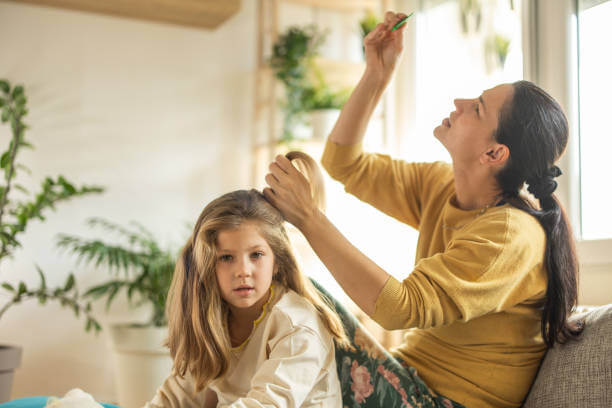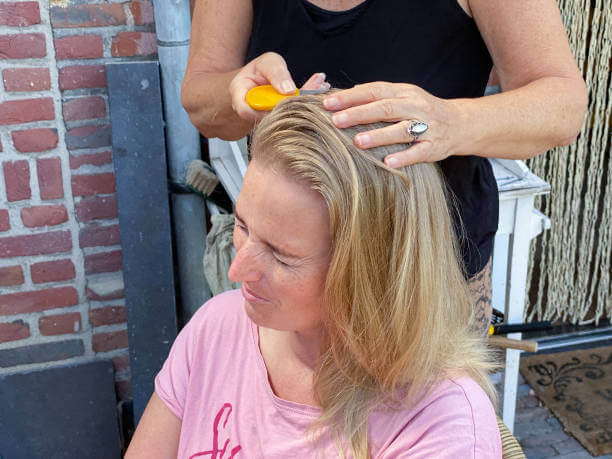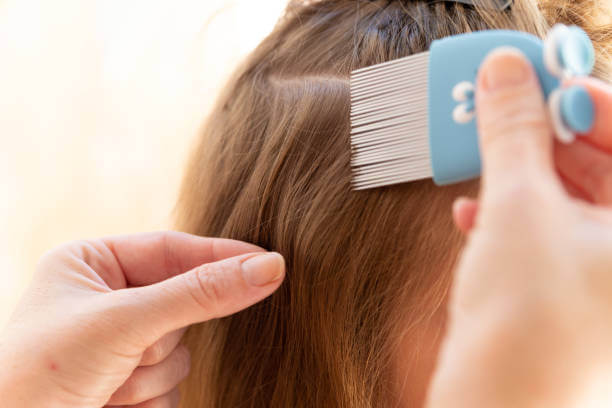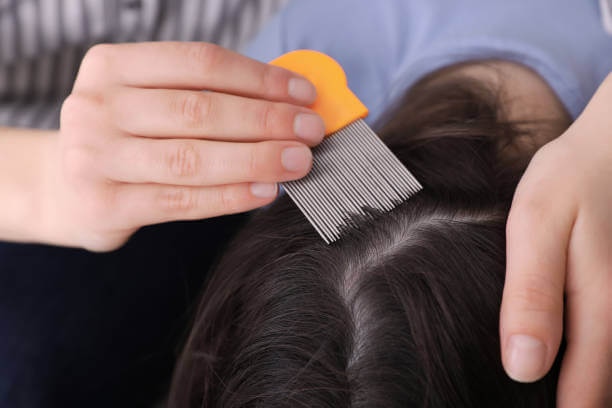Can I remove lice from hair permanently? Lice infestations can be incredibly frustrating, especially when they keep coming back despite repeated treatments. Remove lice permanently requires a combination of effective treatments, proper hygiene, and preventive measures. In this guide, we’ll walk you through everything you need to know about permanently eliminating lice from your hair.
Introduction

What Are Lice?
Lice are tiny, wingless insects that live on human scalps and feed on blood. They are highly contagious and can spread rapidly through close personal contact or by sharing personal items like combs, hats, or towels. Three types of lice affect humans: head lice, body lice, and pubic lice, but in this article, we’ll focus on head lice.
Common Myths About Lice
One common myth is that lice prefer dirty hair. In reality, lice can infest anyone’s hair, regardless of how clean it is. Another misconception is that lice can jump or fly, but they can only crawl. Understanding these myths helps in approaching treatment more effectively.
Understanding Lice Infestations
Life Cycle of Lice
The life cycle of lice consists of three stages: the egg (nit), the nymph, and the adult. Nits are laid by adult lice and are usually found attached to the base of the hair shaft. They hatch into nymphs, which mature into adults capable of laying more eggs. The entire cycle can take about 30 days, making it essential to act quickly to break this cycle.
How Lice Spread
Lice spread primarily through direct head-to-head contact, which is why they are so common among school-aged children. They can also spread through sharing personal items, though this is less common.
Symptoms of a Lice Infestation
Physical Symptoms
The most noticeable symptom of a lice infestation is intense itching on the scalp, neck, and ears. You might also notice small red bumps or sores from scratching.
Behavioral Symptoms
Children with lice may become irritable and have trouble sleeping because lice are more active in the dark. Persistent scratching can also be a sign that lice are present.
Why It’s Important to Remove Lice Permanently

Health Implications
While lice themselves are not known to spread disease, the constant scratching can lead to secondary bacterial infections of the scalp.
Psychological Impact
Lice infestations can cause significant stress, embarrassment, and anxiety, especially for children. The stigma attached to lice can make dealing with them even more challenging.
Effective Treatments for Lice
Over-the-Counter Treatments
Shampoos and Creams
There are many over-the-counter treatments available, including medicated shampoos and creams that contain insecticides like permethrin or pyrethrin. These treatments are usually applied to dry hair and left on for a specified time before washing out.
Prescription Medications
Oral Medications
In severe cases, doctors may prescribe oral medications like ivermectin, which works by paralyzing and killing the lice.
Topical Treatments
Prescription-strength topical treatments like malathion or benzyl alcohol lotion are also effective but should be used under a doctor’s guidance.
Natural Remedies
Essential Oils
Some essential oils, such as tea tree oil, lavender oil, and eucalyptus oil, have been found to be effective against lice when applied to the scalp.
Vinegar and Salt
A mixture of vinegar and salt can help loosen nits from the hair shaft, making it easier to comb them out.
Wet Combing
Wet combing involves thoroughly combing the hair with a fine-toothed comb while it’s wet, which can help remove lice and nits mechanically.
Step-by-Step Guide to Removing Lice Permanently

Preparing for Treatment
Start by washing your hair and drying it completely. Gather all the necessary tools, including a fine-toothed lice comb, a towel, and your chosen treatment.
Application of Treatment
Follow the instructions on your chosen lice treatment carefully. Ensure that you cover all areas of the scalp and hair thoroughly.
Post-Treatment Care
After treatment, wash your bedding, clothing, and any other items that have come into contact with your head in hot water. Vacuum furniture and floors to remove any stray lice.
Common Mistakes to Avoid
Incomplete Treatment
One of the most common mistakes is not following through with the full course of treatment. Even if you don’t see any lice after the first treatment, it’s crucial to complete the entire process to ensure all nits and lice are eliminated.
Reusing Contaminated Items
Avoid using combs, brushes, or hair accessories that were in contact with lice before they were properly cleaned. This can lead to re-infestation.
How to Prevent Lice from Coming Back
Proper Hygiene Practices
Regularly wash your hair and avoid sharing personal items like combs, hats, or towels.
Regular Hair Checks
Perform regular checks on your hair and your children’s hair, especially after any potential exposure to lice.
Educating Children
Teach your children about the importance of not sharing personal items and avoiding head-to-head contact with others.
Dealing with Lice in Schools and Workplaces
Informing the Necessary Parties
If you or your child has lice, inform the school or workplace immediately so they can take appropriate measures to prevent the spread.
Preventive Measures in Public Places
Encourage schools and workplaces to conduct regular lice checks and to educate others about lice prevention.

Special Considerations for Children and Pregnant Women
Safe Treatment Options
Certain lice treatments are not recommended for young children or pregnant women. Always consult a doctor to find the safest treatment option.
Precautionary Measures
Consider natural remedies or non-chemical treatments like wet combing as safer alternatives for children and pregnant women.
How to Clean Your Home After a Lice Infestation
Washing Bedding and Clothes
Wash all bedding, clothing, and other washable items that may have come into contact with lice in hot water and dry them on high heat.
Cleaning Furniture and Floors
Vacuum all carpets, rugs, and upholstered furniture. Consider using a lice spray for non-washable items.
Alternative Therapies for Lice Removal
Heat Treatment
Heat treatment involves using a special device that blows hot air to kill lice and nits. This treatment is usually performed by a professional.
Professional Lice Removal Services
Professional services offer guaranteed lice removal and are often equipped with the latest treatments and technologies.
Myths and Facts About Lice
Debunking Common Misconceptions
- Myth: Lice can fly or jump.
Fact: Lice can only crawl. - Myth: Lice prefer dirty hair.
Fact: Lice are just as likely to infest clean hair.
FAQs About Lice Removal
Can Lice Survive Without a Host?
Lice can survive up to 48 hours without a human host, making it important to clean your home thoroughly after treatment.
How Long Does It Take to Get Rid of Lice?
With effective treatment, lice can be eliminated in about 1 to 2 weeks. However, it’s important to follow up to ensure all nits are gone.
Are Home Remedies Effective?
Some home remedies can be effective, but they are often less reliable than over-the-counter or prescription treatments.
Can Pets Get Lice?
No, pets cannot get human lice. Human lice require human hosts to survive.
How Do You Know If Lice Are Gone?
The absence of itching and visual confirmation that there are no more lice or nits in the hair are good indicators that lice are gone.
What Is the Best Way to Remove Nits from Hair?
The best way to remove nits is through wet combing with a fine-toothed lice comb. After applying a conditioner to damp hair, section the hair and carefully comb through each section, wiping the comb frequently to remove nits.
Can Lice Develop Resistance to Treatments?
Yes, some lice populations have developed resistance to certain over-the-counter treatments, particularly those containing permethrin or pyrethrin. In such cases, you may need to use a prescription treatment or alternative methods like wet combing or natural remedies.
How Can You Tell the Difference Between Dandruff and Lice?
Dandruff flakes are usually white or yellow and can be easily brushed off the scalp, while lice nits are small, oval-shaped, and stick firmly to the hair shaft, usually near the scalp. Nits can be harder to remove than dandruff.
How Soon Can You Re-treat for Lice After the First Treatment?
If you still find lice or nits after the first treatment, you can typically re-treat after 7-10 days, depending on the product’s instructions. This ensures that any newly hatched nymphs are killed before they can mature and lay eggs.
Is It Necessary to Treat All Family Members If One Person Has Lice?
It’s a good idea to check all family members for lice if one person is infested. However, only those who show signs of lice or nits must be treated. Preventive measures should be taken for everyone in close contact, such as washing bedding and avoiding the sharing of personal items.
Can Lice Live on Pillows and Bedding?
Yes, lice can survive on pillows, bedding, and other soft surfaces for up to 48 hours. It’s important to wash all bedding, pillowcases, and clothing in hot water and dry them on high heat to kill any lice that might be lingering.
Is It Necessary to Cut Hair to Get Rid of Lice?
Cutting hair is not necessary to remove lice, although shorter hair can make the treatment process easier. With proper treatment and combing, lice can be effectively removed from hair of any length.
Do Lice Prefer a Certain Hair Type or Color?
Lice do not prefer any particular hair type, color, or texture. They infest all types of hair equally, as long as they have access to the scalp for feeding.
Can You Get Lice From Swimming Pools?
Lice are unlikely to spread through swimming pools because they cannot survive in water and do not swim. However, head-to-head contact during swimming or sharing towels can lead to lice transmission.
Are Lice More Active at Night?
Yes, lice are typically more active at night, which is why itching may seem worse during this time. This nocturnal activity is one reason why children with lice may have difficulty sleeping.
Conclusion About How To Remove Lice From Hair Permanently?
Removing lice permanently requires persistence, careful treatment, and preventive measures. By following the steps outlined in this guide, you can effectively eliminate lice from your life and prevent them from coming back. Remember, it’s not just about getting rid of the lice but also about ensuring they don’t return.
You might also like…
6 Best False Eyelashes for Everyday Use
8 Best Waterproof Sunscreens For Face
How to Remove Dark Circles With Aloe Vera?

